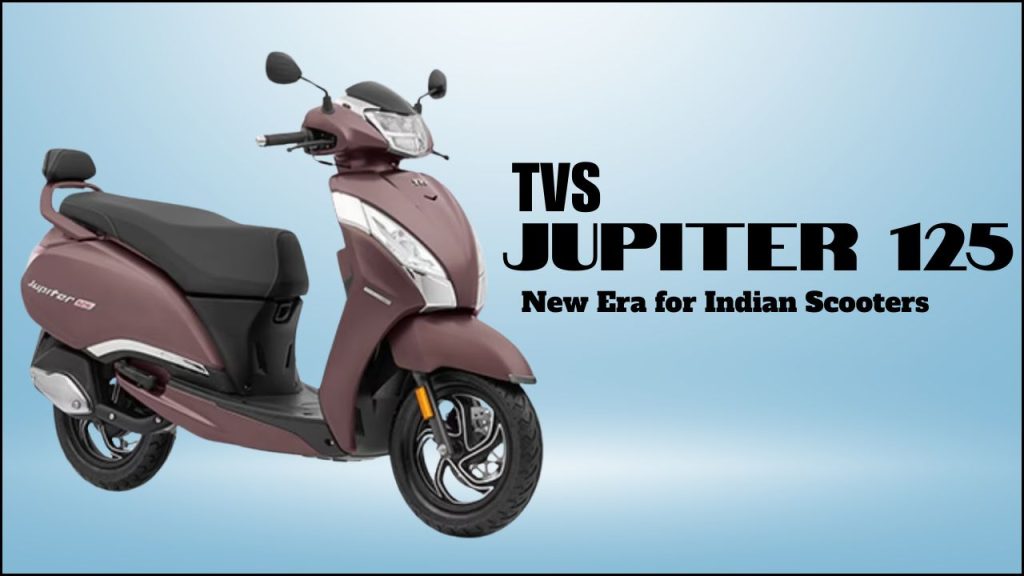
TVS Motor Company is reportedly developing a hybrid version of its popular Jupiter 125 scooter. The launch is expected around mid-2025, marking TVS’s potential entry into India’s emerging hybrid two-wheeler market.
This strategic move could position TVS ahead of competitors in the evolving mobility landscape. The hybrid variant aims to offer improved fuel efficiency while maintaining the convenience of traditional petrol-powered scooters.
Market Context and Timing
The timing for a hybrid scooter appears strategic. India’s electric vehicle infrastructure is still developing across many regions, creating demand for alternative solutions.
Hybrid technology offers a practical middle ground for consumers. It provides the benefits of electric assistance without complete dependence on the charging infrastructure.
Government policies promoting greener mobility could support such innovations. Hybrid two-wheelers may become eligible for future incentives, making them more attractive to buyers.
Development Insights
Recent reports suggest TVS is actively working on hybrid powertrain technology for the Jupiter 125. Test mules have been spotted with unusual wiring layouts and modified engine housings.
These sightings have sparked speculation about the project’s progress. The modifications suggest significant engineering work is underway to integrate hybrid components.
The development aligns with rising consumer demand for eco-friendly commuting options. Urban Indians are increasingly seeking vehicles that offer better mileage without compromising on convenience.
Expected Technical Specifications
| Component | Expected Feature |
|---|---|
| Engine | 124.8cc petrol engine (retained from current model) |
| Electric Motor | Small electric motor for assistance |
| Battery | Lithium-ion battery pack |
| Chassis | Largely unchanged design |
| Visual Changes | New badging and color accents |
Potential Hybrid Features
The hybrid system could offer several advanced features:
- Silent Start and Stop: The electric motor could enable quiet operation during startup and idle conditions.
- Boost Assist: Electric assistance during acceleration could improve performance and reduce fuel consumption.
- Energy Regeneration: Braking energy could be captured and stored in the battery for later use.
- City Traffic Efficiency: The hybrid system could optimize fuel consumption in stop-and-go traffic conditions.
Design and Comfort Considerations
The Jupiter 125 hybrid will likely maintain its comfort-focused design philosophy. The familiar layout that current Jupiter buyers appreciate is expected to remain unchanged.
Visual differentiation will probably come through subtle design elements. New badging and color accents could help identify the hybrid variant from regular models.
The overall dimensions and ergonomics should remain similar to the current Jupiter 125. This approach ensures existing customers can easily transition to the hybrid version.
Launch Timeline and Market Strategy
| Timeline Aspect | Details |
|---|---|
| Expected Launch | Mid-2025 |
| Target Season | Festive season (traditionally high scooter sales) |
| Market Position | Premium variant of existing Jupiter 125 |
| Competition Target | Honda Activa 125, Suzuki Access 125 |
The mid-2025 launch timing could coincide with the festive season. This period traditionally sees increased scooter sales across India, making it an ideal launch window.
The strategy appears designed to maintain TVS’s competitive position in the 125cc segment. Current market leaders like Honda Activa 125 and Suzuki Access 125 dominate this space.
Pricing Strategy
The hybrid variant is expected to command a premium over the regular petrol version. Industry estimates suggest an additional cost of ₹10,000 to ₹15,000.
This pricing strategy reflects the additional technology integration required. The final premium will depend on battery size and the extent of hybrid system integration.
The pricing aims to balance affordability with advanced technology. This approach could make hybrid technology accessible to a broader range of consumers.
Market Impact Analysis
| Factor | Impact |
|---|---|
| Consumer Adoption | Bridge between petrol and electric scooters |
| Market Competition | Could trigger hybrid offerings from other brands |
| Technology Development | Encourage R&D in hybrid two-wheeler segment |
| Infrastructure Dependency | Reduced reliance on charging infrastructure |
Competitive Advantages
The hybrid Jupiter 125 could offer several advantages over fully electric alternatives. Range anxiety, a common concern with electric vehicles, would be eliminated.
The reliability factor remains important for Indian families. Hybrid technology provides innovation while maintaining the dependability of petrol engines.
Performance in India’s traffic conditions could be enhanced. The hybrid system could optimize efficiency in the frequent stop-and-go situations typical of Indian cities.
Industry Implications
The success of the hybrid Jupiter could influence broader market trends. Other manufacturers might accelerate their hybrid development programs.
The move could encourage increased research and development in hybrid two-wheeler technology. This could lead to more advanced and affordable hybrid options in the future.
Government policymakers might take notice of hybrid adoption rates. This could influence future incentive structures and regulations for hybrid vehicles.
Consumer Benefits
Urban commuters could benefit from improved fuel efficiency without infrastructure concerns. The hybrid system offers environmental benefits while maintaining familiar refueling convenience.
Families seeking reliable yet efficient transportation could find the hybrid Jupiter appealing. It combines traditional reliability with modern efficiency improvements.
The technology could prove particularly beneficial in city environments. Traffic conditions in Indian cities are well-suited to hybrid system.
Future Outlook
The hybrid Jupiter 125 represents a potentially significant step in India’s two-wheeler evolution. While it may not immediately revolutionize the market, it could serve as an important transitional technology.
Success could pave the way for more hybrid offerings across different segments. The learnings from this launch could inform future hybrid development strategies.
The project demonstrates TVS’s commitment to innovation in sustainable mobility. It positions the company as a forward-thinking player in India’s evolving transportation landscape.
Frequently Asked Questions
Q: When is the TVS Jupiter 125 hybrid expected to launch?
A: The hybrid variant is expected to launch around mid-2025, possibly during the festive season.
Q: How much more expensive will the hybrid version be compared to the regular Jupiter 125?
A: The hybrid variant is expected to cost ₹10,000 to ₹15,000 more than the regular petrol version.
Q: Will the hybrid Jupiter 125 have the same design as the current model?
A: Yes, the chassis and design will largely remain unchanged, with only new badging and color accents for differentiation.













